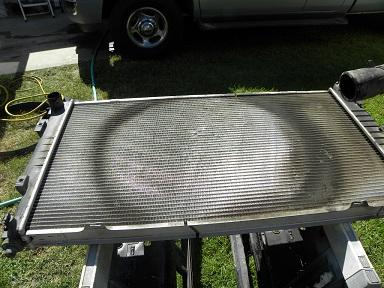Everything posted by IBMobile
-
Bad ECM/PCM?
Rule out a bad VP44 by doing a "hot wire" test. Do this https://www.bluechipdiesel.com/runningtests or the test below.
-
Want a little more power
You're using an Edge EZ and RV275 like I have. I'm using an adjustable boost controller and have it turned up to 30PSI of boost. I got out of China for $5. Some other members ordered them but I think @Dieselfuture never got his.
-
Sticking Front brake caliper..... or what
A vehicle's GVW is based on it's stopping ability that is why the 8800 GVW brake parts are larger.
-
62TE Band ADJ 2015 Dodge Grand Caravan
There are no bands to adjust in this transmission. There are only clutch packs. This video shows all the part in the transmission.
-
Door misalignment, how to fix this?
'My door looks the same as @Doubletrouble"s and yes, a bear did it. The bears put there claws between the top of the door and the body and pull bending the window frame until the glass brakes. The bear then climbs through the open window and does what ever he wants to do. We had left a banana and a can of nuts no candy in the cab. I never bothered to fix it I have all of my teeth unlike @JAG1 who is slowly losing his marbles.
-
Few new to cummins questions
here is a few air filters you can look for.
-
2 stroke info.
Some research I did a few years ago on this subject. Posted March 10, 2016 1. From U. S. Department of Energy: Alternative Fuels Data Center: http://www.afdc.energy.gov/fuels/biodiesel_blends.html "Pure biodiesel (B100) contains about 8% less energy per gallon than petroleum diesel. For B20, this translates to a 1% to 2% difference, but most B20 users report no noticeable difference in performance or fuel economy." 2. From U.S. Department of Energy: National Renewable Energy Laboratory: 100,000-Mile Evaluation of Buses Operated on Biodiesel Blend (20): http://www.nrel.gov/docs/fy07osti/40128.pdf "The fuel economy for both petroleum diesel and B20 groups was 4.41 mpg based on in-use fleet data. An approximately 2% reduction in fuel economy for B20 was measured in laboratory emission testing." 3. From Pacific Biodiesel: http://www.biodiesel.com/biodiesel/benefits/ "I want my MPG! Many alternative fuels have difficulty gaining acceptance because they do not provide similar performance to their petroleum counterparts. Pure biodiesel and biodiesel blended with petroleum diesel fuel provide very similar horsepower, torque, and fuel mileage compared to petroleum diesel fuel. In its pure form, typical biodiesel will have an energy content 5%-10% lower than typical petroleum diesel. However it should be noted that petroleum diesel fuel energy content can vary as much as 15% from one supplier to the next. The lower energy content of biodiesel translates into slightly reduced performance when biodiesel is used in 100% form, although users typically report little noticeable change in mileage or performance. When blended with petroleum diesel at B20 levels, there is less than 2% change in fuel energy content, with users typically reporting no noticeable change in mileage or economy. Superior Lubrication for Your Engine The injection system of many diesel engines relies on the fuel to lubricate its parts. The degree to which fuel provides proper lubrication is its lubricity. Low lubricity petroleum diesel fuel can cause premature failure of injection system components and decreased performance. Biodiesel provides excellent lubricity to the fuel injection system. Recently, with the introduction of low sulfur and ultra low sulfur diesel fuel, many of the compounds which previously provided lubricating properties to petrodiesel fuel have been removed. By blending biodiesel in amounts as little as 5%, the lubricity of ultra low sulfur diesel can be dramatically improved, and the life of an engine’s fuel injection system extended" 4. From GAS2: http://gas2.org/2008/04/10/biodiesel-mythbuster-20-twenty-two-biodiesel-myths-dispelled/#myth7 "FACT: Biodiesel contains about 8.5% less energy per gallon than petroleum diesel. For someone using B20, this means about a 1-2% loss in power, torque, and fuel efficiency. To put things into perspective, that’s about a 2 mph difference on the freeway if you were trying to go 55 mph. Millions of miles of onroad tests (aka trucking) have shown that B20 and diesel are practically indistinguishable. Biodiesel has also been used extensively in heavy-machinery, like tractors, loaders, and agricultural equipment, with no noticeable difference. B100 users may notice a slight drop in fuel mileage based on the small difference in energy content, but torque and power are usually comparable. I’ve seen a 1-3 mpg drop in fuel efficiency running B100. As an FYI, biodiesel has the highest BTU (energy) content of any alternative fuel (falling somewhere between diesel #1 and #2). Energy content of various fuels (per gallon, low value of range):" Regular Diesel Fuel = 128,500 BTUs Gasoline = 125,071 BTUs Biodiesel = 118,296 BTUs Ethanol = 76,000 BTUs In conclusion: in real world testing there is no noticeable change in power or fuel usage with fuel blends of B5 (5% bio-95% petroleum) to B20 (20% bio-80% petroleum). B100 (100% biodiesel did show a decrease in performance and fuel economy due to it's lower BTU value. The added benefit of increased fuel lubricity over the ULS fuel is a plus for the consumer in the form of possible lower maintenance/repair costs
-
Few new to cummins questions
-
Fried ECM from lift pump wiring? Also ECM pin 44?
I would wait for the results and in the mean time do other repairs.
-
Fried ECM from lift pump wiring? Also ECM pin 44?
You're doing a good job cleaning up the electrical on the truck. Are you still waiting to hear from the ECM repair people about which part failed and what system it controls? Can you trace the circuit from the fried component to the pin connector in the old ECM? That may tell you the system that is causing the problem.
-
Keyless entry/remote start install
Which make and model is the kit and can you post the wire diagram? What year and model is your truck? Your signature is not filled out. Has it ever had a remote or power locks before like the high line model?
-
AC Compressor Replace
Look in this article in the "Repairing A/C System" section.
-
Tablet mount
I like it. It would work for me. You could even paint the parts to match. Your thinking out side the box and coming up with a solution for a need with parts that are readily available and posting it is what this four is about.
-
Morimoto HIDs Headlights in a 2nd Generation Dodge
Switch it around, you drive the Honda and your wife drives the truck; then you'll know what to think of it.
-
1998.5 SLT Laramie power seats HELP!
With the first (front) and third (rear) switch commanding its own motor to operate in one direction but not the other tells me those switch contacts are dirty/bad. The motors are good because they work with the second switch.
-
Stuck thermostat?
One way to tell if a t-stat is stuck open is to start the vehicle cold and let it run at idle. If the upper radiator hose at the radiator slowly warms up until it is hot the t-stat is stuck open.. With a normal operating t-stat the hose will stay cold then when the t-stat opens it is hot, no slow warm up.
-
Morimoto HIDs Headlights in a 2nd Generation Dodge
That's what is great about this forum; the willingness of people always looking for a better/easier way to do something or the next best product to install on their truck and posting it. When you find it your wagon can get crowded quickly.
-
How bad is this blow by
I found a piece of vacuum hose that fits just right; just cut it a little longer to make the 90° turn. You probably have a piece laying around.
-
Merry Christmas
It's the Merry Chicken Molting Season
-
Fried ECM from lift pump wiring? Also ECM pin 44?
That wouldn't do it. The power to the fuel pump would be battery/PDC fuse, to relay terminal 30, to relay terminal 87, to fuel pump. In a proper installation the fuse would blow. The ECM powers relay terminal 86 to the relay solenoid. The power draw on the ECM would be .175 amps at 14V. They are resistor protected.
-
Merry Christmas
- 1998.5 SLT Laramie power seats HELP!
I think this is the wire diagram that will work for you. To test a motor apply 12 volts to one wire going to a motor and a ground to the other wire. To test the driver power seat horizontal motor apply 12 volts to pin p17 red/light blue wire (not the red/light blue wire from the circuit breaker) and ground pin p15 yellow/light blue wire; the motor should move one way. reversing the power and ground will make the reverse. The other motors can be tested the same way by applying power and ground to them.- Radiator failure
From the FSM "STANDARD PROCEDURE—COOLANT SELECTION-ADDITIVES The presence of aluminum components in the cooling system requires strict corrosion protection. Maintain coolant at specified level with a mixture of ethylene glycol based antifreeze and water. If coolant becomes contaminated or looses color, drain and flush cooling system and fill with correctly mixed solution." So, the factory calls for ethylene glycol, the green stuff, which has anticorrosive phosphates and silicates. This type of antifreeze calls for a flush and change every 30,000-36,000 miles or 24-36 months. The FSM calls for the first coolant flush and change at 52,500miles or 42 months which is to long a time and the Ph level can fall well below 8.0. This is one of many articles I found on engine antifreeze. https://www.hemmings.com/blog/2014/08/01/tech-101-the-colors-of-antifreeze/- 1998.5 SLT Laramie power seats HELP!
All the diagrams show the power to the seats at the red/light blue wire. I don't see any pink wire in the seat diagrams. Are these seats out of a standard cab or a club cab?- 1998.5 SLT Laramie power seats HELP!
May be these diagrams will help. They are for a 99. The power seats are in them. - 1998.5 SLT Laramie power seats HELP!










